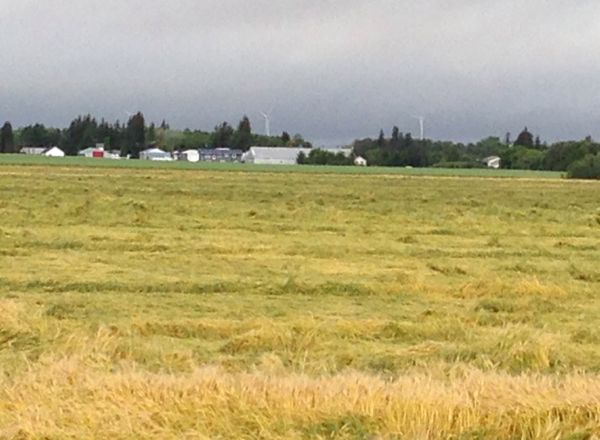CNS Canada –– Large amounts of rain were seen over the weekend in some parts of the Prairies — good for some crops, but not so good for others.
According to Environment Canada, southern Saskatchewan saw high rainfall totals over the weekend with Cypress Hills Park receiving 78.2 millimetres of rain; Val Marie, 66.1 mm; and Carnduff, 64.8 mm, on Saturday alone.
“It’s going to make swathing interesting,” said Norm Hall, president of Agricultural Producers Association of Saskatchewan.
Many swaths of canola and peas, he said, are sitting in water right now. He expected the quality of the peas to be affected significantly, while canola should be able to handle it, as long as it dries up soon. A lot of canola was already damaged from heavy rain in June, he added.
Read Also

Notable changes in exports to China, India
China and India figured prominently in the September export data issued by the Canadian Grain Commission on Nov. 7. For the most part, the CGC’s numbers highlighted issues with grain, oilseed and pulse exports from licensed facilities to those countries.
“The stuff that wasn’t damaged is ripe and ready to swath and the stuff that wasn’t damaged is in full bloom. There’s a lot of weeds that came up too,” he explained.
The area south of Regina is home to a lot of durum that was also affected by the rain, Hall said, but added it’s too early to know how it may be affected.
“It depends at which stage the durum was prior to being sprayed,” he said.
End water basins such as Big Quill Lake are becoming a problem because as they back up, more and more farmland is being flooded, Hall added. “What do farmers do with their land? A lot of that land was hay and pasture.”
Manitoba also received a lot of rain over the weekend, with an estimated total of 50 to 75 millimetres falling across the province. The most was recorded at Reston, which received 74.8 mm, followed by Pierson at 65.2 and Virden at 63.6.
Doug Chorney, president of Keystone Agricultural Producers in Manitoba, said he sees a lot of benefit in the moisture.
“We have 1.2 million acres of soybeans in Manitoba that needed the rain, a lot of people welcomed it,” he said, adding that “for long-season crops this is much needed to help them complete their filling process.”
Chorney noted the area near his own farm at East Selkirk, Man. had been in a moisture deficit for several weeks. Over the weekend it received 4.75 inches of rain, according to a producer Chorney talked to, before which it was so dry, there were cracks in the soil.
Now that the rain has come though, Chorney said it would be good for most crops, especially spring wheat, if the weather stayed warm and sunny between now and harvest.
“Didn’t need”
That sentiment is echoed by Brent Flaten, with the Saskatchewan agriculture ministry in Moose Jaw. He said he is concerned about crops in the province’s southeast.
“Certainly, we didn’t need rain this late in the growing season,” he said.
The excess moisture could also raise disease pressure such as white mould on seeds, said Flaten. Kernels in fields of ripe wheat could also become bleached.
“The pulses, especially lentils, were very thick and vegetative this year; you get this amount of rain in there and it’s going to take a while for the crop to dry out,” he said.
Winds have a tough job drying plants when the crop is that dense, he said.
Flaten also hoped fields will get a long stretch of warm, dry weather to get the crops matured and harvest underway.
— Dave Sims writes for Commodity News Service Canada, a Winnipeg company specializing in grain and commodity market reporting.
















